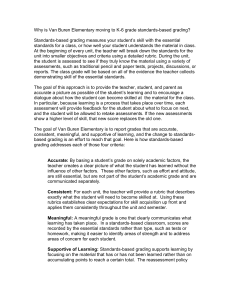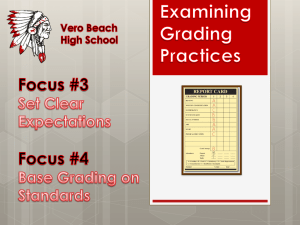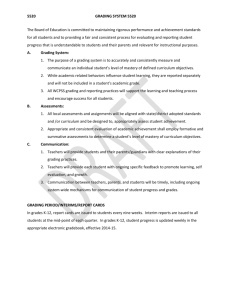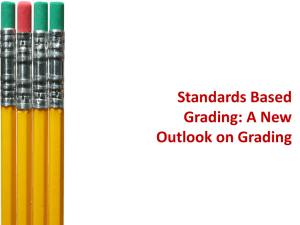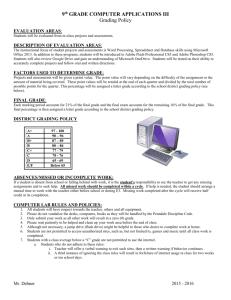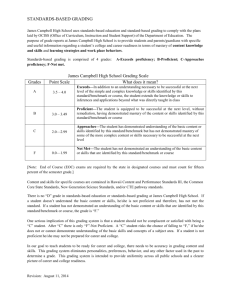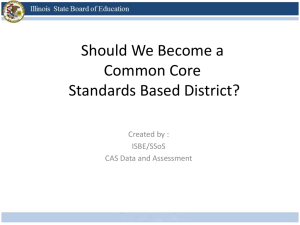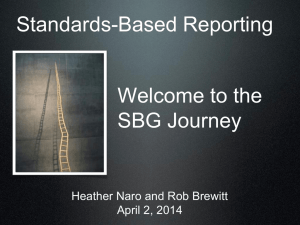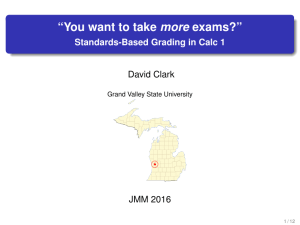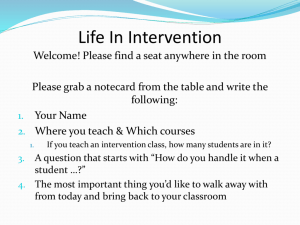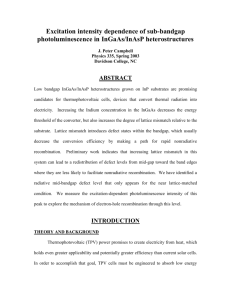File - Mr. DeForest
advertisement
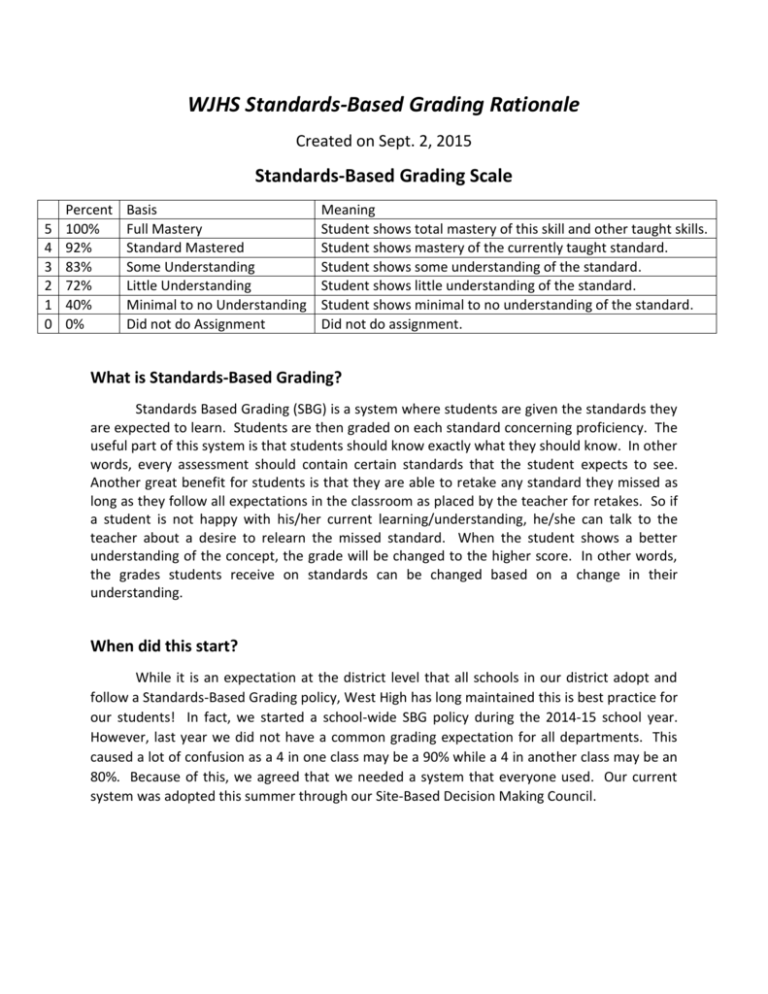
WJHS Standards-Based Grading Rationale Created on Sept. 2, 2015 Standards-Based Grading Scale 5 4 3 2 1 0 Percent 100% 92% 83% 72% 40% 0% Basis Full Mastery Standard Mastered Some Understanding Little Understanding Minimal to no Understanding Did not do Assignment Meaning Student shows total mastery of this skill and other taught skills. Student shows mastery of the currently taught standard. Student shows some understanding of the standard. Student shows little understanding of the standard. Student shows minimal to no understanding of the standard. Did not do assignment. What is Standards-Based Grading? Standards Based Grading (SBG) is a system where students are given the standards they are expected to learn. Students are then graded on each standard concerning proficiency. The useful part of this system is that students should know exactly what they should know. In other words, every assessment should contain certain standards that the student expects to see. Another great benefit for students is that they are able to retake any standard they missed as long as they follow all expectations in the classroom as placed by the teacher for retakes. So if a student is not happy with his/her current learning/understanding, he/she can talk to the teacher about a desire to relearn the missed standard. When the student shows a better understanding of the concept, the grade will be changed to the higher score. In other words, the grades students receive on standards can be changed based on a change in their understanding. When did this start? While it is an expectation at the district level that all schools in our district adopt and follow a Standards-Based Grading policy, West High has long maintained this is best practice for our students! In fact, we started a school-wide SBG policy during the 2014-15 school year. However, last year we did not have a common grading expectation for all departments. This caused a lot of confusion as a 4 in one class may be a 90% while a 4 in another class may be an 80%. Because of this, we agreed that we needed a system that everyone used. Our current system was adopted this summer through our Site-Based Decision Making Council. What does research say about Standards-Based Grading? Research is consistently shows that SBG works! Here are three significant findings: 1. SBG teaches a growth mindset where students can practice their mastery of standards without a penalty of a poor score based on a poor performance because of the ability to retake/redo missed standards. 2. SBG allows the teacher/student/parent to know exactly what the student knows. Instead of just a bunch of grades in the gradebook, we can look at each standard and know exactly where the student is struggling or succeeding. 3. Teachers are able to ensure that their assessments are truly testing to the standards as each portion has to be attached to a specific standard. This ensures that there are no “surprise questions” on the test that don't truly correlate with current content. How can I help my child avoid pitfalls with Standards-Based Grading? While SBG is a great tool, there are some potential negatives associated with this method. Here are some ways to help your student avoid the pitfalls of SBG. 1. Because of the ability to retake/redo assignments, many times students do not try their best on the initial attempt. We need to encourage students to be prepared for the “real world” by encouraging full effort on every assessment. We need to focus on persistence and effort rather than just waiting for the retake. 2. Time is an issue! Between the need to move on in the classroom and the need to reassess past standards, time is tighter than before. We don’t want students to miss any new content by reassessing during class. Therefore, whenever possible, students should try to reassess before or after school. 3. Students, parents and teachers are all working with a new system. There will be some growing pains. If there are issues that are problematic, talk to the teacher! We want your child to be successful. Let us help! Do all classes use the Standards-Based Grading system? While most of our classes do follow the SBG system, there are a few that don’t. Specifically, college dual credit classes do not follow the SBG system as they must follow the grading scale of the college. A few other courses have been approved by SBDM not to follow this policy. If this is the case in any class, the grading system should be described thoroughly in the course syllabus. What are the assessment types in Standards-Based Grading? In SBG, teachers only grade assessments that are checking for understanding. You may hear your child say the homework does not count at school. This is a half-truth! Assignments no longer count toward the grade as the teacher is allowing the class time to learn the content. Therefore, there is not a grade associated with the assignment. These assignments are often called Formative assessments. They help the teacher to know what the students know and where they are prepared to go in class. So while homework may not “count” in the gradebook, it helps both the students and the teacher. Students get a better understanding of the content, are more prepared for retakes, and doing assignments is a pre-requisite for retakes. Ultimately, formative assessments help the teacher better understand what the needs are of his/her students. Summative assessments are the assessments that are graded for understanding. This includes exams, papers, assignments and/or projects that involve a culmination of learning. These assessments should have specific standards addressed with a grade in the gradebook. What is the difference between the 4 and the 5? With our new scale, you will see that there are actually two opportunities for an “A.” In other words, our SBDM wanted to ensure that students who mastered a standard earned an “A,” but students who went above and beyond that standard deserved an even higher score. A good example comes from math: Last year, there was no ability to get the 5 = 100% for most departments. So a student who made no mistakes at all on a math test received the same score as a student who made some silly mistakes but totally understood the standard that was being tested. The 4 is there for students who show the understanding of the standard, but they may have made other mistakes within the work. To go back to the math scenario, they understood how to do the problem, but they made adding/subtracting mistakes so that the answer was incorrect. On the other hand, the 5 is there for students who go beyond the scope of the standard to really show a deeper or stronger understanding!
